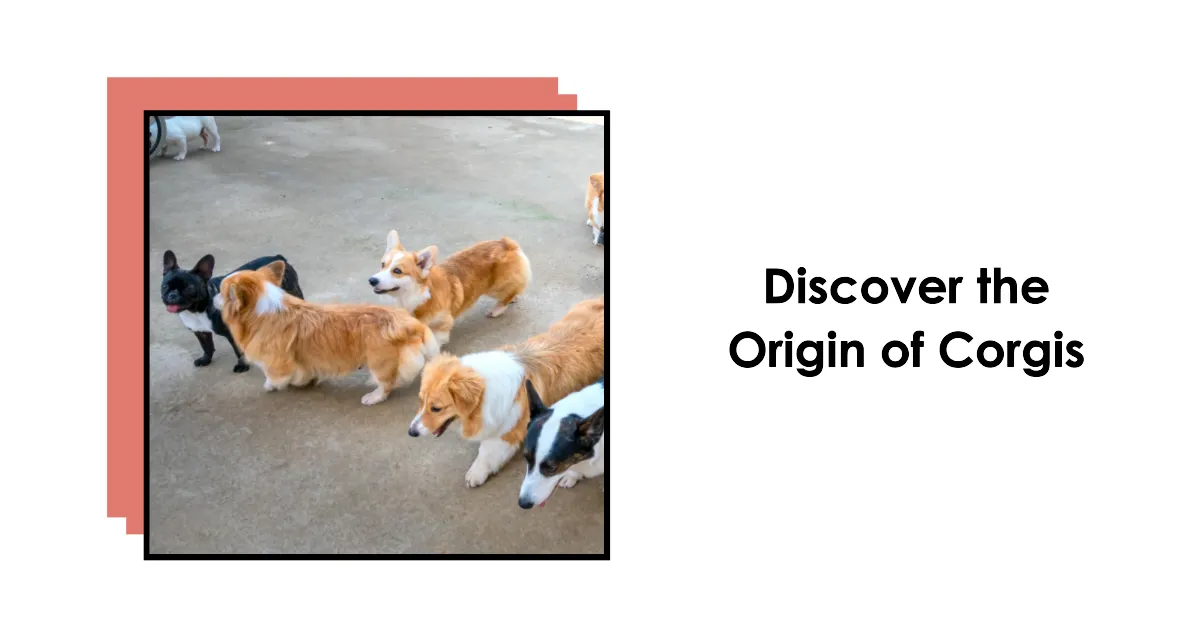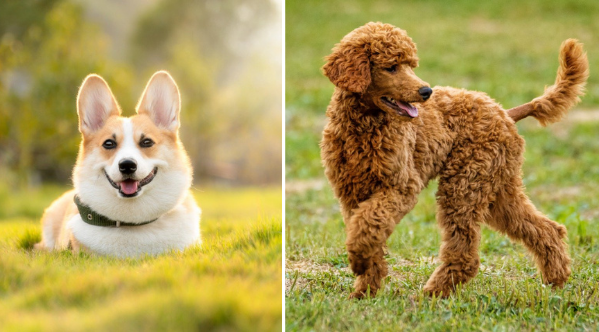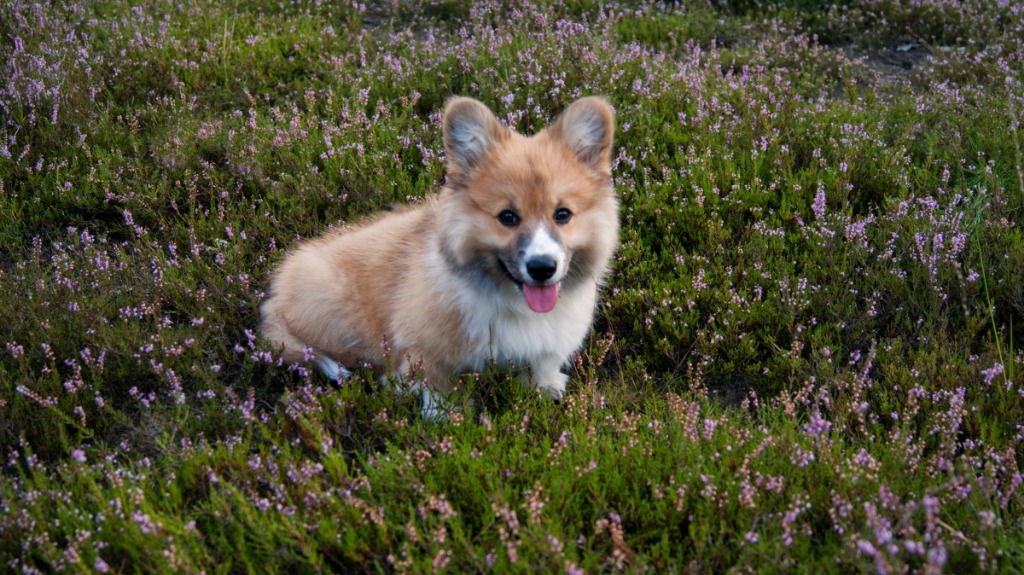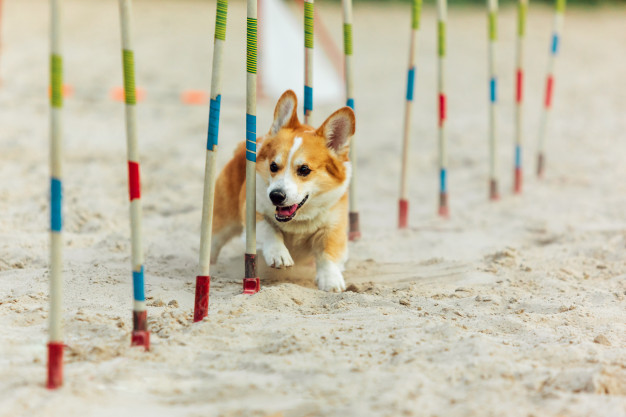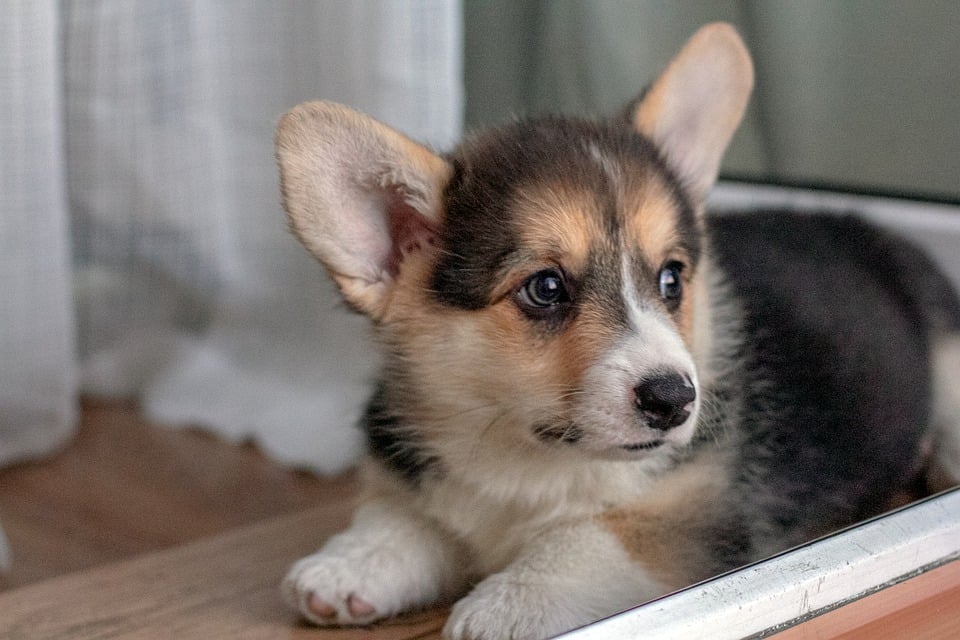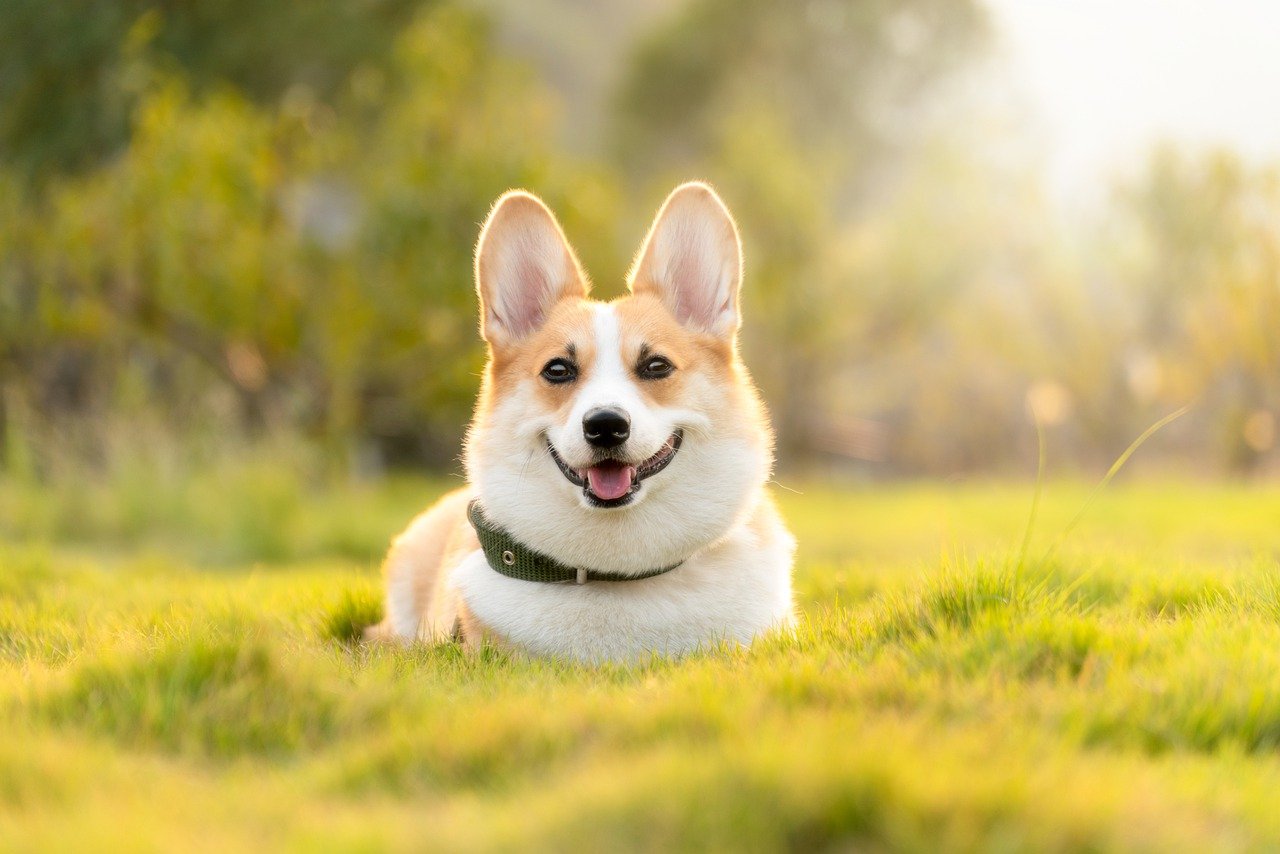Mastering the Art of Corgi Obedience: A Comprehensive Guide
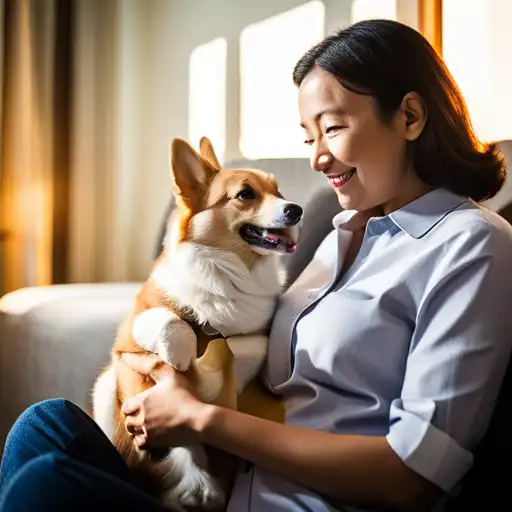
Do you know that corgis are among the most popular dog breeds in the world? With their adorable looks and playful personalities, it's no wonder why they've captured the hearts of dog lovers everywhere.
But did you also know that corgis can sometimes be a bit stubborn and challenging to train? That's where 'Mastering the Art of Corgi Obedience: A Comprehensive Guide' comes in.
This engaging and informative guide is packed with effective techniques and strategies to help you train your corgi to be obedient and well-behaved. From understanding their behavior to teaching them basic commands and addressing specific challenges, this guide has got you covered.
So, get ready to embark on an exciting journey of mastering corgi obedience and ensuring the safety of both you and your furry friend.
Understanding Corgi Behavior
To understand Corgi behavior, observe their interactions with other dogs and their response to different stimuli. Corgis have their own unique body language that can give you insights into their mood and intentions. Pay attention to their tail position, ear position, and overall posture.
A raised tail and erect ears indicate alertness and confidence, while a tucked tail and lowered ears suggest fear or submission. Understanding their body language will help you communicate effectively with your Corgi and prevent any potential conflicts with other dogs.
Additionally, it's important to recognize that Corgis have a strong pack mentality. They thrive in a structured environment where they know their place in the hierarchy. Establish yourself as the leader and set clear boundaries to ensure a safe and harmonious relationship with your Corgi.
Setting Up a Consistent Training Routine
Start by establishing a consistent training routine for your Corgi with positive reinforcement. This won't only help you build a strong bond with your furry companion but also ensure their safety and well-being.
Here are three key steps to help you set up a successful training routine:
- Establish a consistent training schedule: Consistency is key when it comes to training your Corgi. Set aside dedicated time each day for training sessions. This will help your Corgi understand what's expected of them and make the learning process more effective.
- Reinforce good behavior through positive reinforcement techniques: Reward your Corgi with treats, praise, and affection whenever they exhibit desired behavior. Positive reinforcement will motivate your Corgi to repeat the behavior and make training more enjoyable for both of you.
- Be patient and persistent: Training takes time and effort. Stay consistent, be patient with your Corgi, and don't give up. Remember, every small step towards good behavior is a step in the right direction.
By following these steps, you can establish a consistent training routine and effectively reinforce good behavior in your Corgi.
Happy training!
Teaching Basic Commands: Sit, Stay, and Come
Ready to take your corgi's obedience to the next level? In this section, we'll cover the essential commands every corgi owner should teach their furry friend:
- sit
- stay
- come
These commands are the foundation of obedience training and will help you establish control and ensure the safety of your corgi in various situations.
We'll dive into effective training techniques and troubleshoot common challenges to help you master these commands with ease.
Effective Training Techniques
Begin training your corgi with the basic commands of sit, stay, and come using these effective techniques. Here are three proven methods to help you achieve success in training your corgi:
- Crate training: Start by introducing your corgi to a crate, making it a comfortable and safe space for them. Use positive reinforcement, such as treats and praise, to encourage your corgi to enter the crate willingly. Gradually increase the time your corgi spends in the crate, ensuring they associate it with positive experiences.
- Clicker training: Utilize a clicker, a small handheld device that makes a distinct sound, to mark desired behaviors. Pair the click sound with a treat, so your corgi understands that the click signifies a reward. Clicker training allows for precise timing and clear communication, making it an effective method for teaching commands.
- Consistency and patience: Consistency is key when training your corgi. Use the same cues and rewards every time, and reinforce positive behaviors consistently. Patience is also vital as your corgi learns and adjusts to new commands. Remember, training takes time, so be patient and celebrate small victories along the way.
Troubleshooting Common Challenges
To overcome common challenges when teaching your corgi the basic commands of sit, stay, and come, it's important to address any potential obstacles that may arise during the training process.
One challenge you may encounter is resistance to crate training. Some corgis may initially resist being confined to a crate, but with patience and positive reinforcement, they can learn to see it as a safe and comfortable space.
Another challenge is potty training. Corgis are intelligent dogs, but accidents can still happen during the training process. Consistency is key here. Establish a routine for bathroom breaks and reward your corgi for going outside. If accidents do occur, avoid punishment and instead, clean up the mess calmly and continue with the training.
Addressing Corgi-specific Challenges: Leash Pulling and Barking
To effectively address leash pulling and barking challenges specific to your Corgi, use consistent training techniques and reinforce positive behaviors. Here are three essential strategies to help you tackle these issues head-on:
- Teach Loose Leash Walking: Start by rewarding your Corgi for walking calmly beside you without pulling. Use treats or praise to encourage good behavior and redirect attention when they start to pull. With practice, your Corgi will learn to walk politely on a leash.
- Address Barking Triggers: Identify what triggers your Corgi's barking, such as strangers or other dogs. Gradually expose them to these triggers in a controlled environment, rewarding calm behavior and teaching a 'quiet' command. Consistency is key in teaching your Corgi when it's appropriate to bark.
- Provide Mental and Physical Stimulation: Corgis are energetic dogs and need regular exercise to stay happy and well-behaved. Engage them in activities like puzzle toys, obedience training, and interactive playtime to manage their energy levels effectively.
Advanced Training Techniques: Agility and Tricks
Once you have laid a strong foundation of obedience training, you can take your Corgi's skills to the next level by incorporating advanced training techniques such as agility and tricks.
Agility training benefits your Corgi in many ways. It helps improve their physical fitness, mental stimulation, and overall coordination. Plus, it's a great way to bond with your furry friend and have some fun together. To get started with agility training, you can set up a simple obstacle course in your backyard or attend a local agility class.
As for advanced trick training techniques, it's all about building on the basic commands your Corgi already knows. From there, you can teach them impressive tricks like rolling over, playing dead, or even jumping through hoops. With patience, consistency, and positive reinforcement, your Corgi will be performing these tricks in no time!
Socializing Your Corgi: Interacting With Other Dogs and People
Now that your corgi has mastered advanced training techniques, it's time to focus on socializing them with other dogs and people.
Proper dog-to-dog greetings are essential for fostering positive interactions, so teach your corgi how to approach and interact with other dogs in a calm and friendly manner.
Equally important is ensuring positive human interactions, so expose your corgi to various people, including different ages, genders, and appearances, to help them become comfortable and well-behaved around others.
Proper Dog-To-Dog Greetings
When introducing your Corgi to other dogs, it's important to establish proper dog-to-dog greetings. This ensures a safe and positive interaction for both pets. To help you navigate this process, here are three essential tips to keep in mind:
- Understand dog body language: Before allowing your Corgi to approach another dog, observe their body language. Look for signs of fear, aggression, or discomfort such as raised hackles, growling, or stiff posture. If you notice any of these signals, it's best to keep your dog at a safe distance.
- Practice proper leash etiquette: Always keep your Corgi on a leash when meeting new dogs. This allows you to maintain control and prevent any unwanted incidents. Keep the leash loose and avoid tension, as tight leashes can escalate tension between dogs.
- Gradual introductions: Start by allowing the dogs to sniff each other from a distance. If both dogs seem calm and relaxed, you can gradually decrease the distance until they can interact freely. Remember to stay attentive and intervene if necessary.
Positive Human Interactions
To ensure positive human interactions and successfully socialize your Corgi, it's important to introduce them to other dogs and people in a calm and controlled manner. Positive reinforcement is key when it comes to building trust and creating a positive experience for your furry friend.
Begin by introducing your Corgi to new dogs one at a time, allowing them to sniff and interact in a safe environment. Use treats and praise to reward good behavior, reinforcing the idea that meeting new dogs and people is a positive experience.
Similarly, when introducing your Corgi to new people, encourage them to approach slowly and calmly, allowing your Corgi to sniff and become comfortable. Remember, patience is essential.
With consistent positive interactions, your Corgi will become a social butterfly in no time!
Troubleshooting Common Obedience Issues
If your corgi is struggling with obedience, addressing common issues can help improve their training. Here are three key troubleshooting tips to get you started:
- Consistency is key: Make sure you're consistent with your commands and expectations. Dogs thrive on routine, so establish a consistent schedule for training sessions and stick to it. This will help your corgi understand what's expected of them and make obedience training more effective.
- Revisit crate training: If your corgi is having trouble with obedience, it may be helpful to revisit crate training. A crate can provide a safe and comfortable space for your corgi when you're unable to supervise them. Use positive reinforcement and gradually increase the amount of time your corgi spends in the crate to help them associate it with positive experiences.
- Reinforce potty training: Obedience issues can sometimes be linked to potty training problems. Take a step back and reinforce the basics of potty training. Take your corgi outside regularly, reward them for going in the appropriate spot, and clean up accidents promptly to avoid reinforcing bad habits.
Frequently Asked Questions
How Often Should I Brush My Corgi's Fur?
You should brush your corgi's fur regularly to keep it looking fabulous. The best grooming tools for corgis are a slicker brush and a comb. So grab those tools and give your corgi's coat some love!
What Are Some Effective Methods to Prevent My Corgi From Digging in the Yard?
Are you tired of your corgi turning your yard into a minefield? Don't worry, there are effective ways to stop them from digging. Try using deterrents or redirect their behavior with engaging toys and activities.
Can I Train My Corgi to Be Off-Leash in Public Places?
Sure, you can definitely train your corgi to be off-leash in public places. It's all about building trust and using effective training methods. With some patience and consistency, you'll have a well-behaved and obedient corgi by your side on walks.
How Do I Stop My Corgi From Jumping on Guests When They Enter the House?
To teach your corgi to greet guests calmly, try these effective methods: 1) Use positive reinforcement to reward calm behavior. 2) Redirect jumping by teaching an alternative greeting, like sitting or offering a paw.
Are There Any Specific Dietary Requirements for Corgis to Support Their Obedience Training?
To support your corgi's obedience training, it's important to understand their dietary requirements. Certain foods can boost their focus and energy levels. But be careful, common mistakes like overfeeding can hinder their progress.

